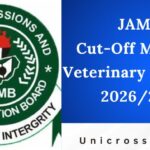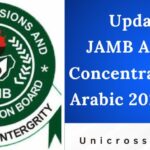JAMB Areas of Concentration for Agricultural Science: The Joint Admissions and Matriculation Board (JAMB) Unified Tertiary Matriculation Examination (UTME) for 2026/2027 is a critical step for Nigerian students aspiring to pursue higher education, particularly in fields like agriculture, which plays a vital role in the nation’s economy. Agricultural Science as a subject tests candidates’ understanding of farming practices, crop and livestock production, soil management, and environmental sustainability. The areas of concentration refer to the key topics outlined in the official JAMB syllabus, which guide what to study for maximum impact. These topics are designed to ensure candidates grasp practical and theoretical aspects of agriculture, preparing them for real-world applications in food security, agribusiness, and rural development.
For the 2026/2027 session, the syllabus remains largely consistent with previous years, emphasizing foundational concepts while incorporating emerging issues like climate-resilient farming and biotechnology. Focusing on these areas helps candidates prioritize high-yield topics, as JAMB questions often draw directly from them. The syllabus is divided into nine broad sections, each with specific subtopics. Below is a detailed breakdown of the areas of concentration, presented in a clear, structured format using bullet points for easy reading. Aim to study these comprehensively, using diagrams, practical examples, and past questions to reinforce learning.

JAMB Areas of Concentration for Agricultural Science
Section A: General Agriculture
This section introduces the scope of agriculture and its economic importance, forming the foundation for all other topics.
- Meaning and scope of agriculture: Define agriculture as the art and science of cultivating crops, rearing animals, and managing resources for food, fiber, and other products. Discuss its branches, including crop production, livestock farming, forestry, and fisheries.
- Importance of agriculture to the Nigerian economy: Explore contributions to GDP, employment, export earnings (e.g., cocoa, palm oil), and food supply. Highlight challenges like low productivity and solutions through mechanization.
- Agricultural policies and programs in Nigeria: Cover initiatives like Operation Feed the Nation, Green Revolution, and the Anchor Borrowers’ Programme. Explain their objectives, achievements, and limitations.
- Problems of agriculture in Nigeria: Identify issues such as land tenure systems, inadequate funding, poor infrastructure, pests/diseases, and climate change. Suggest remedies like subsidies and extension services.
- Basic farm tools and equipment: Describe simple tools (e.g., hoes, cutlasses) and powered machines (e.g., tractors, harvesters). Discuss maintenance, safety, and selection based on farm size.
- Farm mechanization and sources of power: Explain mechanization levels (manual, animal, mechanical) and power sources (human, animal, engine). Discuss advantages (e.g., efficiency) and disadvantages (e.g., high cost).
Section B: Crop Production
Focuses on plant cultivation, from planning to harvest, with emphasis on tropical crops relevant to Nigeria.
- Meaning and importance of crop production: Define as growing plants for food, feed, or cash. Highlight roles in nutrition, income, and soil conservation.
- Classification of crops: Categorize by uses (cereals like maize, legumes like cowpea, root/tubers like yam, vegetables like okra), life cycles (annuals, biennials, perennials), and economic value.
- Principles of crop production: Cover crop rotation (to maintain soil fertility), mixed farming, and intercropping. Explain benefits like pest control and yield improvement.
- Seed selection and seed dressing: Discuss qualities of good seeds (viability, purity) and methods like winnowing. Cover dressing with chemicals to prevent seed-borne diseases.
- Nursery and transplanting: Define nursery as a protected area for seedling growth. Describe bed preparation, transplanting techniques, and spacing.
- Plant propagation: Explain methods such as seeds, cuttings, layering, grafting, and budding. Discuss advantages for vegetative propagation (e.g., true-to-type plants).
- Crop rotation and farming systems: Detail rotation sequences (e.g., legumes after cereals) and systems like bush fallowing, shifting cultivation, and taungya.
- Routine field operations: Include land preparation (ploughing, harrowing), planting, weeding, fertilizer application, and harvesting. Emphasize timing and tools.
Section C: Soil Science
Examines soil as a growing medium, including formation, properties, and management for sustainable productivity.
- Soil formation and profile development: Describe soil as a mixture of minerals, organic matter, water, and air. Explain factors (parent rock, climate, organisms) and horizons (topsoil, subsoil, bedrock).
- Soil physical properties: Cover texture (sand, silt, clay), structure (granular, blocky), porosity, and water-holding capacity. Discuss determination methods like feel test.
- Soil chemical properties: Include pH (acidity/alkalinity), cation exchange capacity, and nutrient content (N, P, K). Explain effects on plant growth.
- Soil organisms and their roles: Identify bacteria, fungi, earthworms, and termites. Discuss decomposition, nitrogen fixation, and aeration benefits.
- Soil fertility and productivity: Differentiate fertility (nutrient availability) from productivity (yield potential). Explain maintenance through organic/inorganic amendments.
- Soil erosion and conservation: Define erosion types (sheet, gully) and causes (rainfall, deforestation). Cover control methods like contour ploughing, terracing, and cover cropping.
Section D: Animal Production
Covers livestock rearing, health, and products, with a focus on common Nigerian breeds.
- Meaning and importance of livestock production: Define as rearing animals for meat, milk, eggs, hides, and manure. Highlight economic and nutritional value.
- Classification of livestock: Categorize by type (ruminants like cattle, non-ruminants like pigs), products (dairy, beef), and uses (work animals).
- Common breeds of livestock: Examples include White Fulani cattle, Large White pigs, Rhode Island Red chickens, and West African Dwarf goats. Discuss characteristics and adaptability.
- Routine management practices: Cover feeding (rations, forages), housing (pens, barns), and sanitation. Emphasize hygiene to prevent diseases.
- Livestock feeds and feeding: Classify feeds (concentrates, roughages) and nutrients (proteins, carbohydrates). Discuss balanced rations and feeding schedules.
- Animal health management: Identify diseases (e.g., foot-and-mouth, Newcastle) and parasites (ticks, worms). Cover vaccination, deworming, and quarantine.
- Animal products and by-products: Include meat processing, milk pasteurization, and uses of hides/bones. Discuss marketing and value addition.
Section E: Agricultural Extension and Economics
Addresses farmer education, marketing, and financial aspects of farming.
- Meaning and importance of agricultural extension: Define as transferring knowledge to farmers via agents. Explain roles in technology adoption and rural development.
- Extension methods and principles: Cover demonstrations, farm visits, radio, and group discussions. Discuss adult learning principles.
- Basic farm economics: Introduce opportunity cost, farm records (income/expense books), and budgeting. Explain profit calculation.
- Marketing of agricultural produce: Discuss channels (farmer to market), pricing, storage (silos, barns), and cooperatives. Highlight challenges like middlemen.
Section F: Agricultural Technology
Explores modern tools and practices to enhance efficiency.
- Simple farm machines: Describe planters, ridgers, and shellers. Explain operation and maintenance.
- Agricultural technology and innovation: Cover irrigation (drip, sprinkler), fertilizers (NPK types), and pesticides. Discuss safe use and environmental impact.
- Biotechnology in agriculture: Introduce tissue culture, genetic modification for pest resistance. Explain benefits and ethical concerns.
Section G: Fishery and Forestry
Focuses on aquatic and tree-based resources.
- Fishery: Define capture (nets, hooks) and culture (ponds, cages) fisheries. Discuss fish breeds (tilapia, catfish) and management.
- Forestry: Explain types (natural, plantation) and importance (timber, fuelwood). Cover conservation against deforestation.
Section H: Agricultural Nutrition and Health
- Nutrient sources: Plants (minerals from soil) and animals (vitamins in feeds). Discuss deficiencies (e.g., kwashiorkor from protein lack).
- Food processing and preservation: Methods like drying, canning, and refrigeration. Emphasize nutrition retention.
Section I: Environmental Issues
- Climate change impacts: Effects on yields, pests. Mitigation via agroforestry and sustainable practices.
- Waste management: Composting, biogas from farm waste.
Mastering these areas requires integrating theory with practice. Use textbooks like Essential Agricultural Science by O.A. Iwena for depth. Practice with JAMB past questions to identify patterns. Time management in the exam is key: allocate about 40 minutes for Agricultural Science in the 2-hour UTME.
READ ALSO: Updated JAMB Areas of Concentration for Government 2026/2027
FAQs
What is the main focus of the JAMB Agricultural Science exam for 2026/2027?
The exam emphasizes practical agriculture relevant to Nigeria, including crop/livestock production, soil management, and economic aspects. Questions test application over rote memorization.
How many questions are there in Agricultural Science?
Typically 50 objective questions, worth 50 marks. Aim for at least 40 correct for a strong score.
Are there changes in the 2026/2027 syllabus compared to previous years?
No major changes; updates include more on climate-smart agriculture. Always confirm via official JAMB brochures.
What study tips do you recommend for this subject?
Draw diagrams for soil profiles or animal breeds. Join study groups for discussions on extension services. Revise weekly and simulate exam conditions.
Can I use Agricultural Science for non-agric courses?
Yes, it’s required for courses like Forestry, Fisheries, or Animal Science, and as an alternative to Biology in some science programs.
How do I handle calculation-based questions?
Practice farm budgeting or fertilizer application math. Use simple formulas like profit = revenue minus cost.
What if I miss a section during preparation?
Prioritize high-weight sections like Crop Production and Soil Science, which cover 40% of questions. Fill gaps with quick summaries.
Are practical skills tested?
No lab practicals, but questions may describe scenarios (e.g., identifying erosion control methods).







